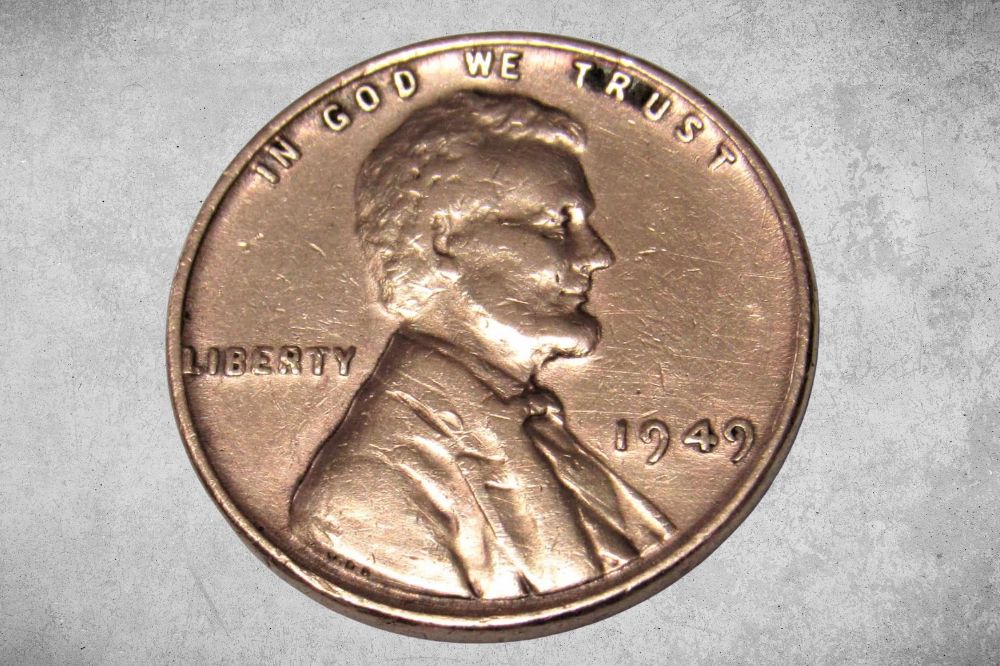The Lincoln penny is an iconic piece of American currency that has been in circulation almost as long as US coins have existed. Collectors are particularly interested in the 1949 Lincoln penny due to its age and the fact that it is no longer in production. As the number of these coins in circulation decreases, their value and popularity continue to grow.
This blog covers the 1949 Lincoln penny’s value, grading, varieties, errors, and historical significance. We’ll explain what collectors look for regarding rarity and condition and different grades and varieties, including D and S mint marks. We’ll also discuss common minting errors and their impact on value.
1949 Penny Details
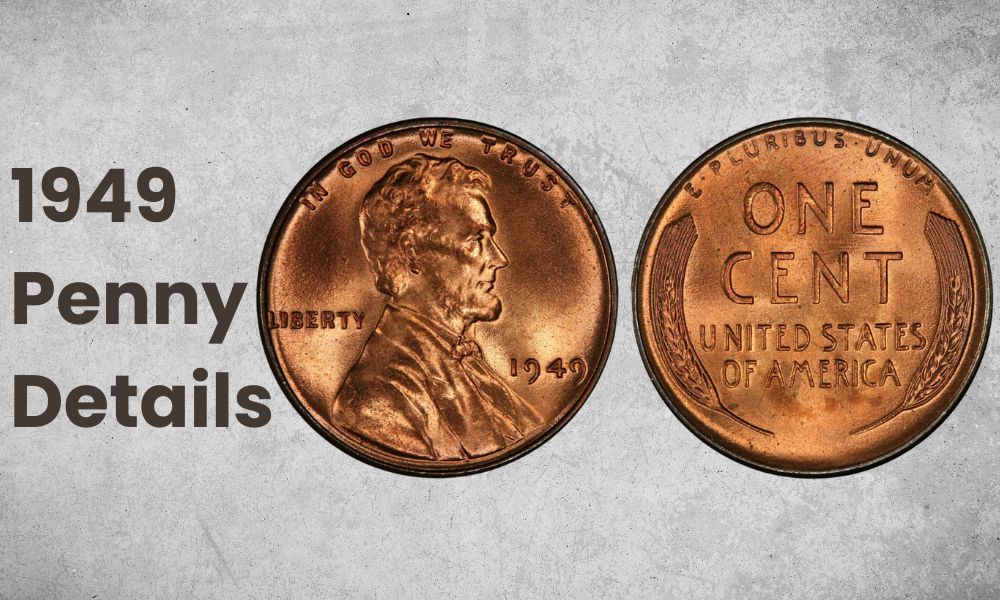
- Mass/Weight: 3.11 grams
- Mintage: 217,775,000
- Designer / Engraver: Victor D Brenner
- Minted at: Philadelphia (No Mint Mark)
- Metal Composition: 95% Copper – 5% Tin and Zinc
- Diameter: 19 mm
Observe
On the obverse side of the penny, you will find a striking right-facing profile of Abraham Lincoln. Victor David Brenner, sculptor, and medalist of Lithuanian-American descent, is the artist responsible for creating the iconic portrait of Abraham Lincoln.
One of the most interesting aspects of the 1949 Penny is its VDB controversy.
Victor David Brenner had added his initials to the penny design, which caused some controversy when the coin was first minted in 1909. Initially, the initials were too prominent, and some people felt that Brenner was trying to promote his work rather than creating a coin that honored Lincoln. However, the issue was eventually resolved in 1918.
The 1949 Penny features a tiny VDB on Lincoln’s shoulder that was cut off. In addition to the portrait of Lincoln and the VDB initials, the 1949 Penny also features several inscriptions that add to its historical significance.
To the left of Lincoln’s image, you will find the word “Liberty,” a tribute to the ideals of freedom and democracy Lincoln championed throughout his life. Opposite this inscription is the year of minting, 1949, which is a reminder of the period in which the coin was created and the historical events that took place at that time.
The phrase “In God We Trust” is located along the top outer edge of the penny, emphasizing the importance of faith and trust in American society.
It’s also worth noting that the 1949 Penny is unique in that it doesn’t have denticles, which are the small tooth-like protrusions around the edge of most coins. The absence of denticles on the 1949 Penny is a distinctive feature that sets it apart from other coins of its time and adds to its collectability and value.
Reverse
The reverse side’s center is dominated by the inscription “One Cent,” which reminds us of the coin’s face value and practical use in everyday transactions. Below the denomination, you will find the words “United States of America,” which speak to the penny’s role as a symbol of American identity and values.
The wording on the coin is encircled by two bundles of wheat that are symmetrically arranged on either side, creating a harmonious border around the inscriptions. The wheat reverse was also designed by Victor David Brenner, who was responsible for the iconic portrait of Lincoln on the obverse side.
Interestingly, Brenner’s initials are not listed on the reverse design, a departure from the controversial VDB initials that caused such a stir on the obverse.
Running from one wheat tip to the other at the top of the reverse side is the motto “E Pluribus Unum,” which highlights the significance of unity and diversity in American culture. This Latin phrase, “Out of Many, One,” has been a part of American coinage since the 18th century and reminds us of the country’s founding principles.
1949 Penny Value Chart |
|||||
| Mint Mark | Mint State
(MS 63) |
Fine
(F 12) |
Uncirculated (MS 60) | About Uncirculated (AU 50) | Extremely Fine
(EF 40) |
| 1949-D Penny Value | $3.30 | $0.05 | $1.13 | $0.39 | $0.22 |
| 1949-S Penny Value | $3.30 | $0.17 | $1.13 | $0.39 | $0.33 |
| 1949 (P) No Mint Mark Penny Value | $3.30 | $0.05 | $1.13 | $0.39 | $0.22 |
1949 Penny Value and Varieties Guide
1949 No Mint Mark Lincoln Wheat Penny Value
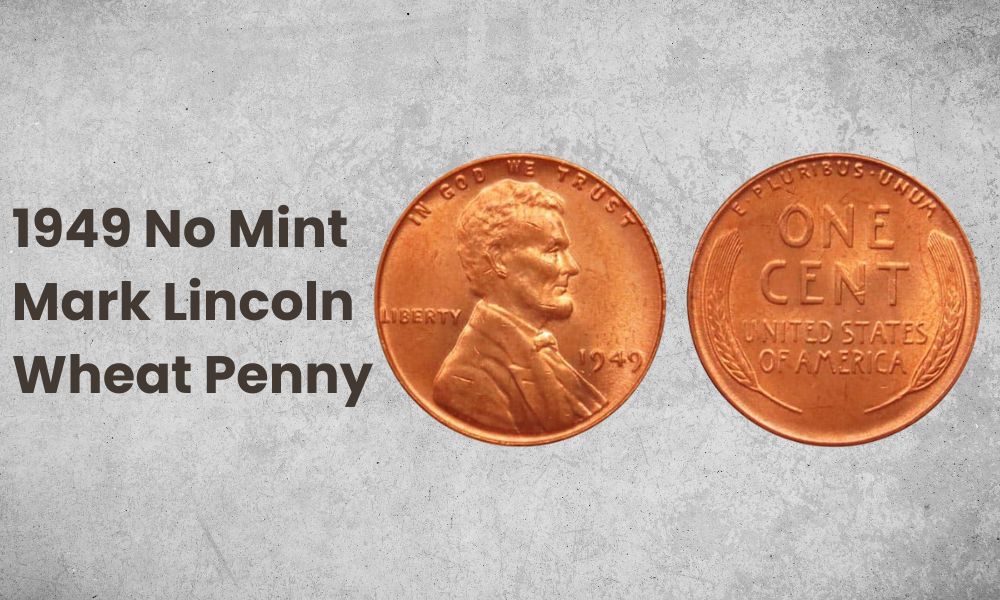
- Mass: 3.11 grams
- Price: $11 to $35 (or more)
- Mint Mark: no mintmark
- Face Value: $0.01 (one cent)
- Composition: 95% copper and 5% tin and zinc
- Designer: Victor D. Brenner
- Year of minting: 1949
- Place of minting: Philadelphia
- Quantity produced: 217,775,000
- Diameter: 19 mm
- Edge: Smooth
- Type: Lincoln Wheat Penny
The 1949 P wheat penny holds a special place in the hearts of numismatists, having been struck in the Philadelphia Mint. An estimated 217 million of these pennies were issued in that year. Although most circulated coins are relatively common and may only fetch a few cents, uncirculated 1949-P pennies are highly sought after and can fetch a significant amount, ranging from $11 to $35.
It is worth mentioning that a 1949 penny in MS 67 RD condition is highly sought after and can command a price of approximately $8,000. In fact, a single example of this coin sold for an impressive $12,075 at an auction.
1949 D Lincoln Wheat Penny Value
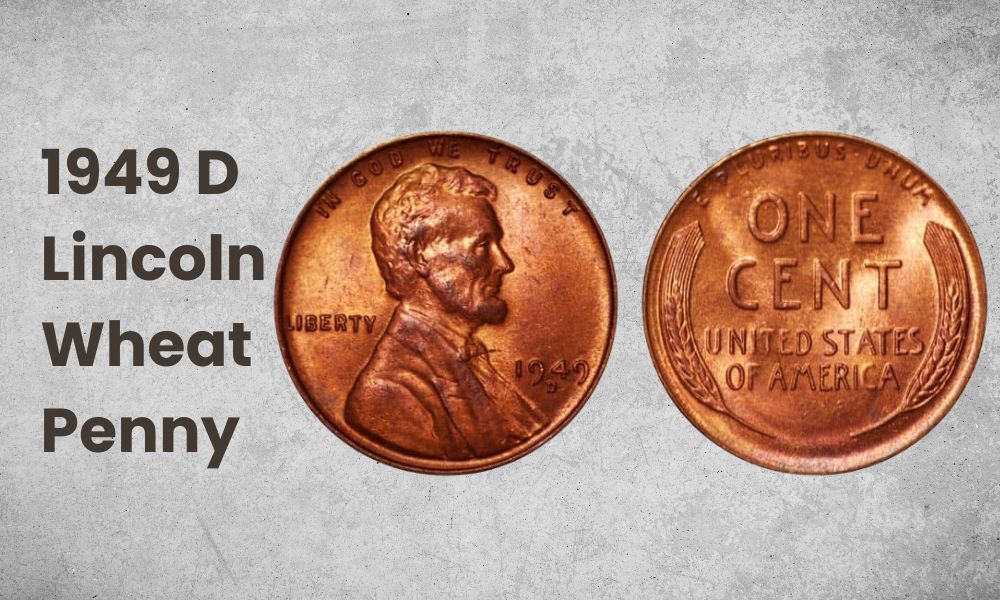
- Composition: 95% copper and 5% tin and zinc
- Face Value: $0.01 (one cent)
- Mint Mark: D
- Quantity produced: 153,132,500
- Mass: 3.11 grams
- Diameter: 19 mm
- Type: Lincoln Wheat Penny
- Designer: Victor D. Brenner
- Price: $8 to $26 (or more)
- Edge: Smooth
- Place of minting: Denver
- Year of minting: 1949
The 1949-D Denver penny is considered abundant in terms of its rarity scale. There is a slight increase in value starting with the extremely fine grade 1949-D penny.
A way to differentiate popular grades from less popular ones is through the prominent lines on Lincoln’s coat. A complete line signifies the lapel, while a clear separation between the coat and bow tie is highly sought after.
The Denver Mint produced 153,132,500 Wheat Pennies with the D Mint Mark in 1949, and some of these coins have sold for high prices, reaching up to $7,500.
1949 S Lincoln Wheat Penny Value
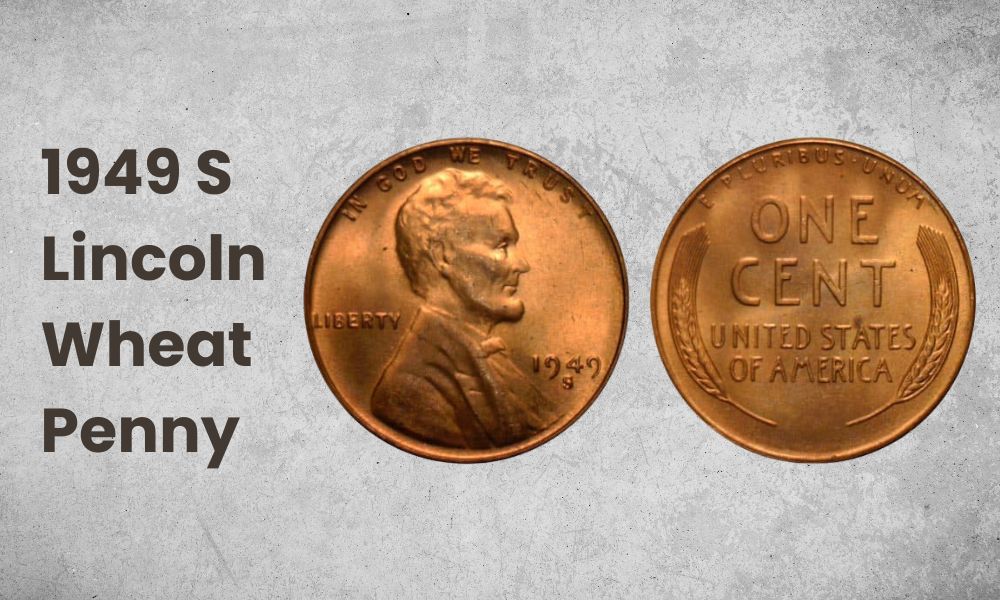
- Place of minting: San Francisco
- Diameter: 19 mm
- Mint Mark: S
- Mass: 3.11 grams
- Year of minting: 1949
- Designer: Victor D. Brenner
- Price: $11 to $16 (or more)
- Edge: Smooth
- Composition: 95% copper and 5% tin and zinc
- Type: Lincoln Wheat Penny
- Face Value: $0.01 (one cent)
- Quantity produced: 64,290,000
In 1949, the San Francisco Mint produced a relatively small number of pennies, with only 6.4 million released into circulation. One distinguishing feature of the 1949-S penny is the sharpness of details, with collectors looking for bold and complete lettering. An excellent illustration would be one where all the letters in “One Cent” are distinctly visible, without any decrease in height towards the “O.”
While the value of circulated 1949-S pennies may not be as high as other varieties, they remain an essential part of numismatic history. 1926-S Pennies on the higher grade can sell for significant values, with some selling for approximately $650.
1949 Penny History
The evolution of American pennies is a fascinating journey through time. From the Large Cents with Lady Liberty on the obverse to the current Lincoln Cent, these coins have undergone many changes in design and composition over the years.
Benjamin Franklin designed the Fugio Cent in 1787, featuring a sun and sundial on the obverse and interlinked circles representing the 13 states on the reverse. It was also known as the Franklin Cent. This was the first US coin to feature such unique designs, which paved the way for more creativity in coin design.
The introduction of Small Cents in 1857 brought about the first coin to bear the portrait of a US President, the Lincoln Cent. It was a significant departure from previous designs, including no US Presidents.
George Washington believed that putting Presidents on coins went against the principles of the American Democratic Experiment, which is why he never appeared on any coins until after the Lincoln Cent. Since then, US Presidents have been a staple in American money. Even Washington has been posthumously honored for circulating $1 bills, quarters (25c), and $1 coins.
Victor David Brenner, a Lithuanian Jew who immigrated to New York in 1890, designed the 1949 Penny, also known as the Wheat Cent. Brenner attended prestigious schools in New York and Paris and worked as an assistant to Augustus Saint-Gaudens, the artist responsible for beautifying American coins.
Theodore Roosevelt, the 23rd US President, had requested external artists to be hired to make the coins more artistic, and Brenner was one of them. When he first designed the Lincoln Cent in 1909, he placed his insignia on the coin, which was later removed due to criticism. By 1949, however, it had become standard to include his initials (VDB) on the penny. The metal composition of the penny has changed over the years.
The 1949 Penny was made of a 95% copper of bronze mix, with the remainder in zinc and tin. However, the current composition is 97.5% zinc and 2.5% copper. While the 1949 Penny is not particularly valuable, high-grade versions of this coin can still fetch a reasonable price.
Uncirculated 1949-P pennies can be worth anywhere from $11 to $35, and a coin graded MS 67 RD can go for about $8,000, with one known to have sold for $12,075 at a 2006 auction.
1949 Penny Grading
The 1949 Penny is graded on a scale of RD, RB, or BN, with RD being the highest color rating. RD stands for “Red,” RB for “Red-Brown,” and BN for “Brown.” The grading process considers factors such as luster, surface condition, and overall eye appeal. A high-grade 1949 Penny can fetch a significant price, so proper grading is essential for collectors looking to buy or sell these coins.
Lists of 1949 Penny Errors
1. 1949 Penny 80% Off-Centre Error
When it comes to collecting coins, errors are often prized possessions. However, not all errors are created equal. An off-center error with over 75% off-center may not be as impressive to collectors since a large portion of the coin’s surface is blank.
However, there are exceptions. One exception is the off-center error in which the year was stamped, making it a treasure for those interested in that particular year. This type of error can fetch a high price at auction, such as the 1949 penny that sold for $490 in 2012.
While some errors may not appeal to all collectors, there are always those who find them fascinating and are willing to pay a premium to add them to their collection
2. 1949 D/D Penny RPM Error
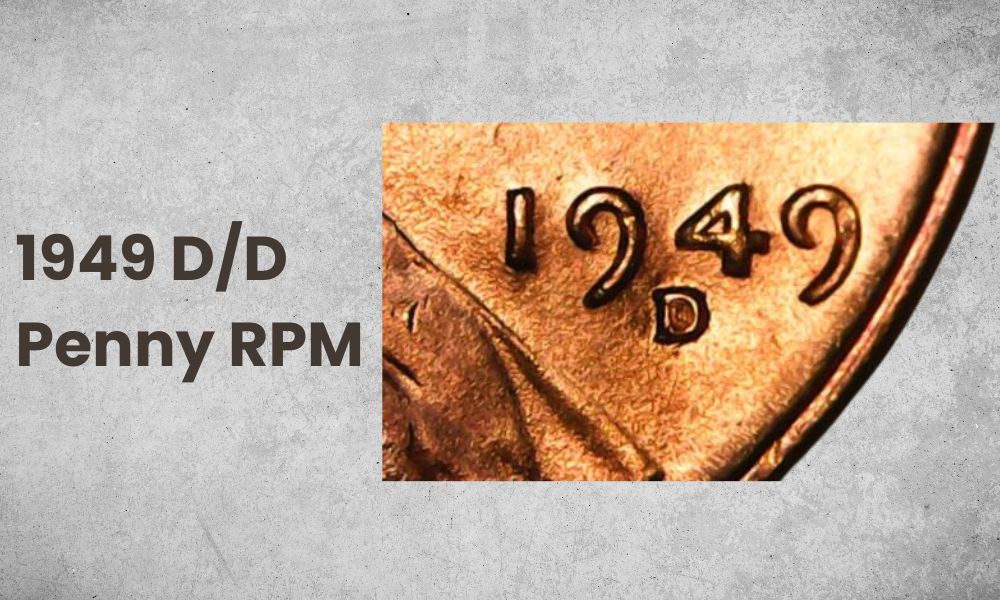
The process of minting coins involves multiple steps, including using a hub, die, and planchet, which goes through the machine several times to ensure the details are sharp and clear.
The machine reproduces the date, words, and portraits, but until 1989, the mint mark was added by hand. As a result, the mint mark can sometimes be repunched by mistake, resulting in a re-punched mint mark (RPM).
The value of an RPM penny depends on its condition, with an AU 53 penny worth around $35 and an MS 65 RD penny worth up to $400.
3. 1949 Penny DDO Error
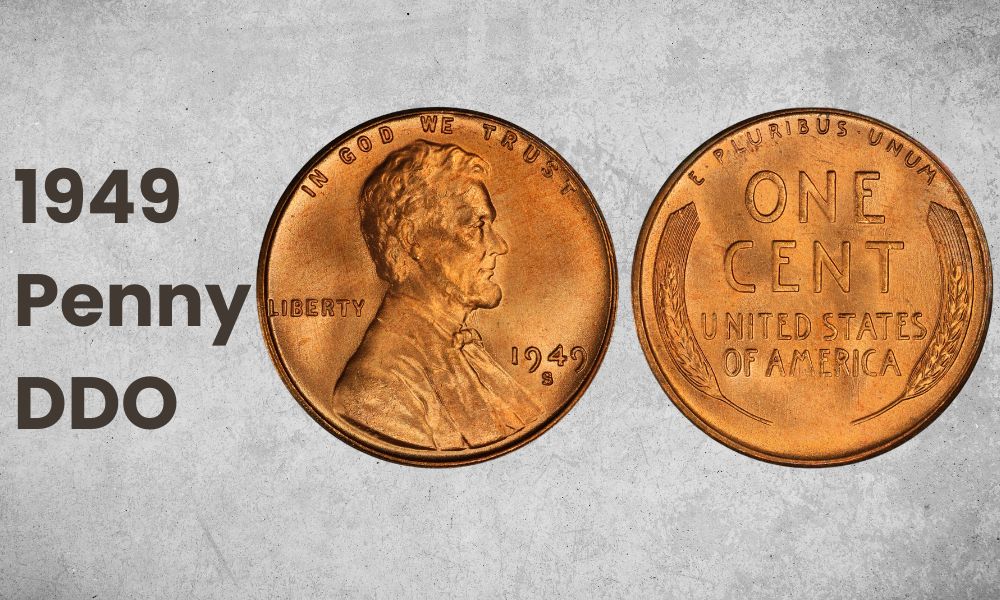
During the coin-making process, multiple strikes are involved in creating the final product. If a die shifts slightly between strikes, it can create a doubling or tripling error on the coin that will be repeated on every coin struck from that die.
This type of error is known as a doubled die variety (DDO). It can be found in various areas of the coin’s design, including numbers and letters. One example of a DDO is visible on the number 4 of a particular coin and is valued at around $300 among collectors.
4. 1949 S/S RPM Penny Error
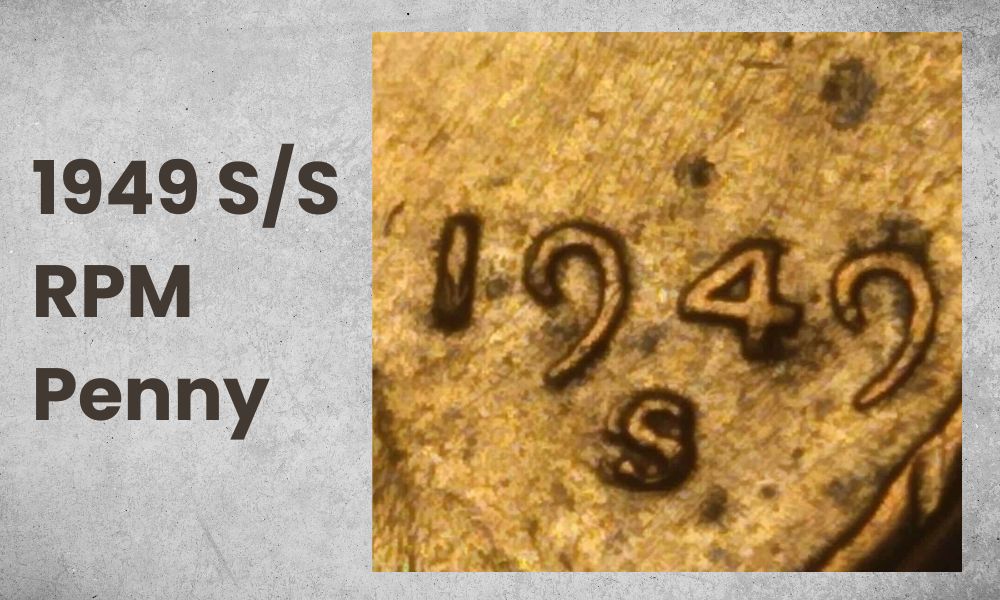
Mint marks can offer an additional opportunity for error on coins. A re-punched mint mark, or RPM, can occur when the mint worker strikes the mark multiple times in different locations.
For example, a D/D means the mint mark was punched twice, creating a slightly overlapping effect. On the other hand, an S/D or S/S means that the mint worker accidentally struck the mint mark to the right or on top of the previous punch.
These errors can add value to a coin, with some selling for up to $900 ungraded if the RPM is easily visible to the naked eye. Even a slight shift in the mint mark can add value, such as an S slightly off-center from the previous S, which sold for $70 in MS 65 RD.
5. 1949 Penny 90% Off-Centre Error
One of the most common errors is doubling or tripling, caused by a shift in the hub, die, or planchet between strikes. This results in multiple images of the same design, creating a desirable and rare variety.
However, if the planchet moves, it can cause a significant portion of the coin’s surface to remain blank, creating an off-center error. While an off-center error that leaves over 75% of the coin blank is generally not valued by collectors, this particular error can be a treasure to those interested in the specific year the coin was minted. For instance, a 90% off-center error 1949 penny sold for $630 in 2021.
1949 Penny FAQ
What is the worth of the 1949 penny?
A 1949 penny’s value depends on its condition and variety. A circulated 1949 P penny is worth around $0.03, while an uncirculated one can fetch up to $35.
The 1949 D penny is more valuable, with a circulated one worth $0.05 and an uncirculated one worth up to $26 or more. The most valuable is the 1949 S penny, with a circulated one worth $0.05 and an uncirculated one worth up to $16 or more.
What makes the 1949 penny rare?
The 1949 penny is rare because it’s old, out of production, and the number of coins in circulation has decreased. Its unique features, like the missing denticles and VDB controversy, make it more valuable.
Certain varieties and errors, such as the 90% off-center error and the 1949 S/S RPM penny error, can greatly increase its worth and desirability for collectors.
